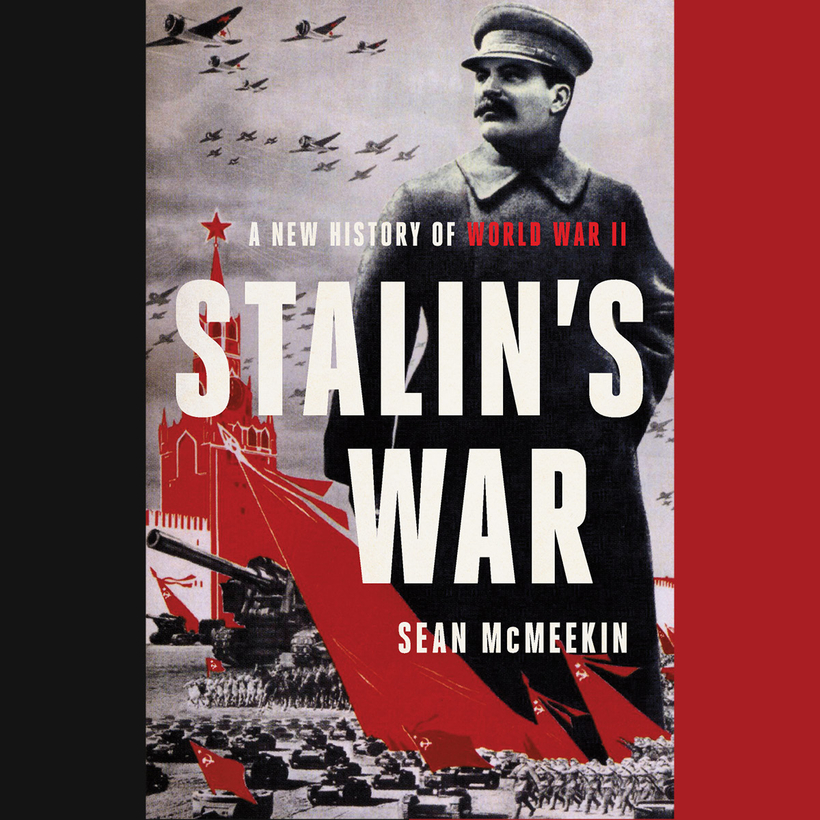When I set out to research Stalin’s War, my history of the Second World War publishing later this month, I was expecting to find that Winston Churchill was more stubborn in resisting Soviet demands than U.S. president Roosevelt, the latter so famously solicitous of Stalin’s favor in everything from gargantuan Soviet Lend-Lease consignments to plans for Poland.
In general, this turned out to be true, although this is not saying much for Churchill, who also bent over backward to satisfy Soviet requests, from his impulsive gifting of 200 Hawker Hurricane pursuit planes pledged to defend Singapore to Stalin in the wake of the German invasion of the U.S.S.R. in June 1941, to pressuring Poland’s exile government in London to accept Stalin’s preferred Polish borders at the Moscow conference in October 1944.
What I had not expected to learn was that Churchill did put up serious resistance to Stalin’s designs in what may have been the most critical strategic debate of the war: the question of where the Western Allies would invade Europe. Curiously, it is on this one question—the “Mediterranean underbelly” stratagem pushed by Churchill as an alternative or complement to the “Overlord” Channel landings—that he is usually pilloried, even by his admirers, for strategic foolishness. Far from the apogee of Churchillian folly, the Mediterranean stratagem was the one thing Churchill got right.
To understand the stakes at the Tehran conference of November 1943, where the three Allied leaders met, we need to take a quick look at the strategic map of the time. While Stalin’s armies, flush with Lend-Lease armor and fuel, had seen off German offensives at Stalingrad the previous winter, the Red Army was still in eastern Ukraine and Belorussia, 600 miles and more from the Soviet-German frontier. Meanwhile, Britain and the U.S. had more than half a million troops in Italy, an airbase at Bari, facing the Balkans, and 68 landing craft available to ferry troops across the Adriatic—where the Germans, despite moving in reinforcements after the Sicily and Italy landings, had much thinner defenses on the ground than on the Channel coast in France and Belgium.
The Mediterranean stratagem was the one thing Churchill got right.
Far from an eccentric Churchillian brainstorm, the “Adriatic strategy” had been seriously discussed in Anglo-American staff talks, receiving favorable reviews from Eisenhower, Marshall, and their British counterparts. It made so much sense that Roosevelt chimed in during the first plenary session at Tehran, proposing a “landing at the head of the Adriatic,” after which the Allies would “operate north-east into Romania in conjunction with the Soviet advance from Odessa”—if the Soviets made it that far. (Odessa was retaken only in April 1944.)
Stalin, confronted with the horrifying prospect of Anglo-American forces reaching Romania, Hungary, and maybe even Warsaw and Berlin before the Red Army, could only sputter that “the Balkans are far from Germany.” Stalin’s objection was geographically untrue—Normandy and Calais were nearly twice as far from the Rhine as Trieste was from Munich—but fortunately for Stalin, Roosevelt’s Soviet-sympathizing adviser Harry Hopkins had sent General Marshall off on a walking tour, so Marshall was not present to correct him. Hopkins even passed an insidious note under the table, asking who had promoted the “Adriatic business” with the president—so the offender could be sacked.
Roosevelt quietly dropped the matter and teamed up with Stalin to overrule Churchill, ordering that all 68 landing craft be withdrawn from Italy and that “nothing must be undertaken in any other part of the world”—including Asia, where an amphibious landing to open the Burma Road to China was ruled out—that might weaken or delay Overlord, the frontal cross-Channel invasion Stalin preferred, because it would both keep Anglo-American forces as far from Germany and Poland as possible, and bloody them up badly for good measure.
The “Mediterranean” (actually Adriatic) stratagem was Churchill’s last stand, his last chance to preserve British influence in the postwar world and save the Balkans and Eastern Europe from Soviet domination. That it failed, owing to Stalin’s objection and Roosevelt’s decision to side with Stalin, is clear enough. But the Old Lion deserves credit for trying.
Sean McMeekin is a professor of history at Bard College and the author of several books. Basic Books will publish his latest, Stalin’s War: A New History of World War II, on April 20

